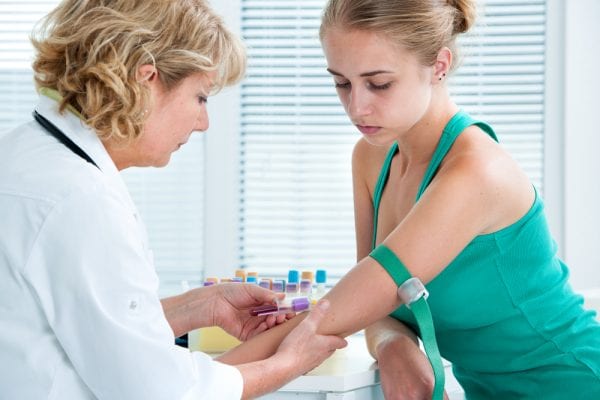
Gonorrhea is a common sexually transmitted disease, with approximately 820,000 new infections detected in the U.S. each year.1 These infections can be easily and effectively treated with medication; however, many people don’t realize they have an STD or seek treatment for them.
This means that complications can occur, such as gonococcal arthritis. This is a rare complication of the STD, but a serious one that can cause long-term joint damage and skin conditions if left untreated.
This article will discuss how gonorrhea can lead to a condition called gonococcal arthritis and how individuals with gonorrhea joint pain can find relief.
Causes of Gonococcal Arthritis
Gonorrhea is most commonly spread through sexual contact, but it can also be passed from mothers to their newborn babies during childbirth.1 Women are most commonly affected by this disease, especially sexually active teenage girls. This STD is caused by a certain type of bacteria called Neisseria gonorrhoeae. This bacterium can be spread from the blood to one or more joints in the body.2 This is when gonococcal arthritis occurs and can cause severe pain and other symptoms.
Symptoms of Gonococcal Arthritis
Gonorrhea may have no symptoms at all at first, which means that many people don’t even know they have it.1 If the condition exists for a prolonged time without treatment, gonococcal arthritis usually first appears in the knees, ankles, wrists, and elbows.3 It can include joints that are red and swollen, joints that have a restricted range of motion, and tender joints. People with this type of arthritis may also have fevers and skin legions. Babies who are born with gonorrhea and not promptly treated may be more irritable, have difficulty eating, and spontaneously move limbs due to joint abnormalities.1,4
Identifying a Gonococcal Arthritis Rash
One of the most common symptoms of this condition is a gonococcal arthritis rash, which presents itself as skin lesions.2 About half of gonococcal arthritis patients have a skin condition occur, and these lesions may appear as pink or red raised sores.5 They can also develop into purple-colored sores that contain pus. In most patients, the gonococcal arthritis rash is not painful and tends to go away after a few days once treatment begins.
Diagnosis and Treatments for Gonorrhea Joint Pain
The first step in diagnosing gonorrhea joint pain is to conduct a test to determine whether gonorrhea is present.5,6 Urine tests, blood tests, cervical gram stains, or throat cultures may be used. From there, a doctor may take a fluid sample with a needle from the area of the inflamed joint. A lab will determine if the sample contains bacteria that causes gonococcal arthritis. It is very important for individuals who have been diagnosed with gonorrhea to inform their sexual partners so that they can seek testing and treatment as well.
Antibiotic drugs are commonly used to treat gonorrhea, and retesting is necessary to see if the infection has cleared up.7 To relieve the discomfort of gonorrhea joint pain, topical creams like JointFlex may be recommended. Most people who pursue treatment will feel their gonorrhea joint pain subside within a few days. Practicing safe sex is the best way to prevent gonorrhea and the joint pain that can result as a complication of it.
REFERENCES for GONOCOCCAL ARTHRITIS
1. Gonorrhea – CDC fact sheet (Detailed version). Centers for Disease Control and Prevention. Retrieved October 19, 2018 from https://www.cdc.gov/std/gonorrhea/stdfact-gonorrhea-detailed.htm.
2. Gonococcal arthritis. MedlinePlus. Retrieved October 17, 2018 from https://medlineplus.gov/ency/article/000453.htm.
3. Li, R. & Gossma, W. G. (2018 September 28). Arthritis, gonococcal. StatPearls Publishing. Retrieved October 18, 2018 from National Center of Biotechnology Information https://www.ncbi.nlm.nih.gov/books/NBK470439/.
4. Gonorrhea. Medical Institute for Sexual Health. Retrieved October 18, 2018 from https://www.medinstitute.org/factsheets/gonorrhea/.
5. Schmitt, S. (2017 May). Infectious arthritis. The Merck Manual: Consumer Version. Retrieved October 18, 2018 from https://www.merckmanuals.com/home/bone,-joint,-and-muscle-disorders/bone-and-joint-infections/infectious-arthritis.
6. Horowitz, D. L., Katzap, E., Horowitz, S., Barilla-LaBarca, M. L. (2011 September 15). Approach to septic arthritis. American Family Physician, 84, 653-660. Retrieved October 17, 2018 from https://www.aafp.org/afp/2011/0915/p653.html.
7. Gonorrhea treatment and care. Centers for Disease Control and Prevention. Retrieved October 18, 2018 from https://www.cdc.gov/std/gonorrhea/treatment.htm.
